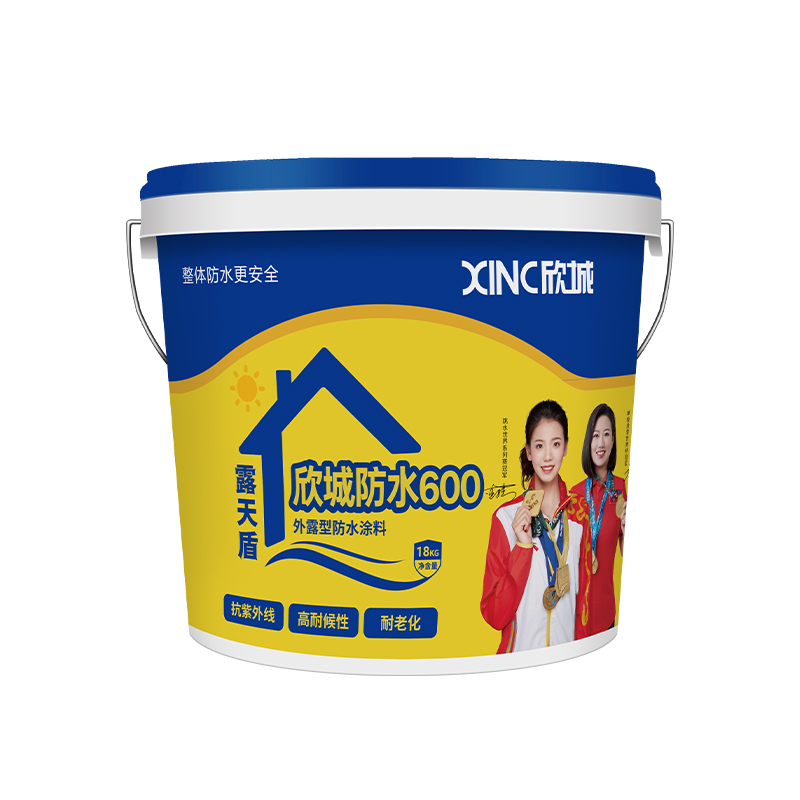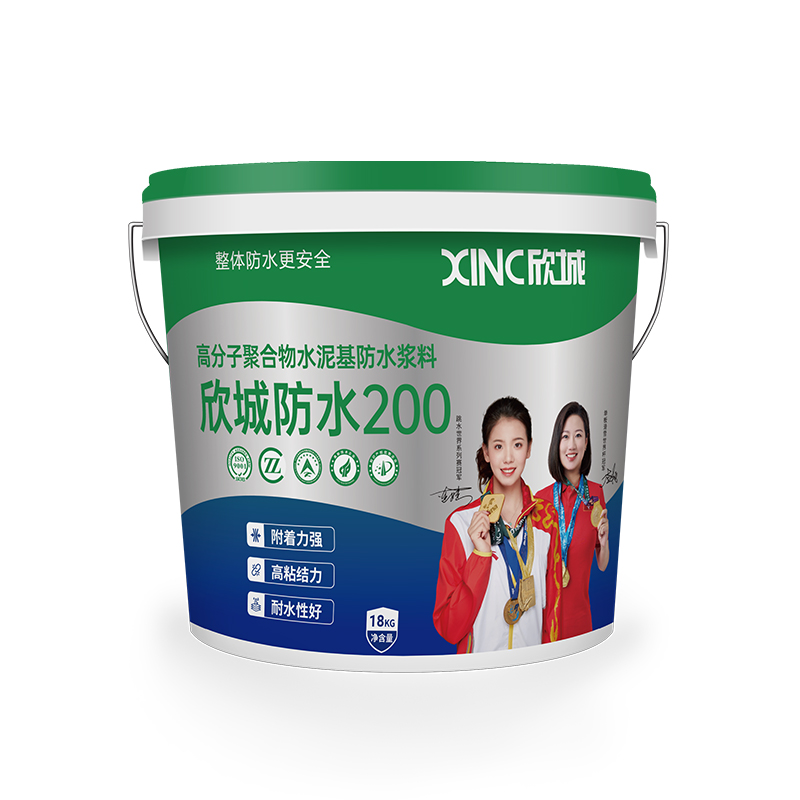Can water-based polyurethane waterproof coatings form a good film even on damp surfaces?
Release Time : 2025-10-14
In building waterproofing projects, humidity is often a key variable determining success. This is especially true during the rainy season in southern China, during basement construction, or during rush projects, where concrete bases often struggle to fully dry, leaving residual moisture or high humidity on the surface. Traditional oil-based waterproof coatings require extremely dry substrates, requiring application on a completely dry surface. Otherwise, problems such as blistering, delamination, and adhesion loss are highly likely to occur. The emergence of water-based polyurethane waterproof coatings overcomes this limitation. Their ability to form a good film even on damp surfaces makes them an ideal choice for complex environments, greatly enhancing application flexibility and project reliability.
The key to water-based polyurethane waterproof coating's stable film formation in humid environments lies in its unique chemical composition and film-forming mechanism. Unlike oil-based coatings, which rely on the evaporation of organic solvents, water-based polyurethane waterproof coatings use water as their dispersion medium. Their specially designed molecular structure imparts excellent hydrophilicity and permeability. When applied to a damp surface, the moisture doesn't form a barrier; instead, it facilitates initial wetting of the coating and the base layer. The active ingredients in the coating slowly penetrate the concrete's capillary pores, interacting subtly with the minerals in the base material to form a strong anchoring effect. This penetration and bonding process allows the coating to cure from within, rather than simply adhering to the surface, thus preventing bulging or peeling caused by water evaporation.
Importantly, the film-forming process of water-based polyurethane waterproof coatings is a gradual self-crosslinking reaction. As the water evaporates, the polymer chains crosslink to form a continuous, dense, elastic film. This process is relatively insensitive to ambient humidity; even trace amounts of moisture precipitating from the base surface will not interrupt the crosslinking reaction. On the contrary, moderate humidity can even help the coating dry more slowly, reducing stress cracking caused by rapid water loss. This ability to "coexist with water" makes water-based polyurethane waterproof coatings highly adaptable to typical wet environments, such as post-rain construction, underground structures, and newly poured concrete.
In practical application, this advantage translates into significant time savings and quality assurance. Construction companies no longer need to wait for the substrate to completely dry; waterproofing can be performed as soon as concrete curing is complete, shortening the overall construction period. This characteristic can especially help prevent delays caused by weather or insufficient curing time in projects under tight deadlines. Furthermore, because the coating adheres tightly to the damp substrate, the resulting waterproof layer is more integral and less susceptible to separation due to temperature fluctuations or vibration during subsequent backfilling or pouring, thereby enhancing the long-term stability of the waterproofing system.
Furthermore, its excellent film-forming properties on damp substrates reduce the demanding requirements for the construction environment. Traditional coatings pose safety risks in poorly ventilated or enclosed spaces due to the difficulty in evaporating solvents, but water-based polyurethane waterproof coatings eliminate these concerns. Its low odor and low toxicity make it suitable for use in locations with high air quality requirements, such as residences, hospitals, and schools. Even in confined spaces, application does not cause significant discomfort to workers or residents.
Ultimately, the stable film formation of water-based polyurethane waterproof coatings on damp substrates is not only a technological breakthrough but also a reflection of a deep understanding of real-world construction conditions. It doesn't demand an ideal environment, but rather proactively adapts to complex and ever-changing on-site conditions, resolving engineering challenges with the wisdom of materials. Behind this inclusiveness lies a respect for the real-world use of buildings—after all, true waterproofing shouldn't be limited to the dry environment of a laboratory; it should remain rock-solid in basements, in wet corners, and across every imperfect construction site, silently safeguarding the building's tranquility.
The key to water-based polyurethane waterproof coating's stable film formation in humid environments lies in its unique chemical composition and film-forming mechanism. Unlike oil-based coatings, which rely on the evaporation of organic solvents, water-based polyurethane waterproof coatings use water as their dispersion medium. Their specially designed molecular structure imparts excellent hydrophilicity and permeability. When applied to a damp surface, the moisture doesn't form a barrier; instead, it facilitates initial wetting of the coating and the base layer. The active ingredients in the coating slowly penetrate the concrete's capillary pores, interacting subtly with the minerals in the base material to form a strong anchoring effect. This penetration and bonding process allows the coating to cure from within, rather than simply adhering to the surface, thus preventing bulging or peeling caused by water evaporation.
Importantly, the film-forming process of water-based polyurethane waterproof coatings is a gradual self-crosslinking reaction. As the water evaporates, the polymer chains crosslink to form a continuous, dense, elastic film. This process is relatively insensitive to ambient humidity; even trace amounts of moisture precipitating from the base surface will not interrupt the crosslinking reaction. On the contrary, moderate humidity can even help the coating dry more slowly, reducing stress cracking caused by rapid water loss. This ability to "coexist with water" makes water-based polyurethane waterproof coatings highly adaptable to typical wet environments, such as post-rain construction, underground structures, and newly poured concrete.
In practical application, this advantage translates into significant time savings and quality assurance. Construction companies no longer need to wait for the substrate to completely dry; waterproofing can be performed as soon as concrete curing is complete, shortening the overall construction period. This characteristic can especially help prevent delays caused by weather or insufficient curing time in projects under tight deadlines. Furthermore, because the coating adheres tightly to the damp substrate, the resulting waterproof layer is more integral and less susceptible to separation due to temperature fluctuations or vibration during subsequent backfilling or pouring, thereby enhancing the long-term stability of the waterproofing system.
Furthermore, its excellent film-forming properties on damp substrates reduce the demanding requirements for the construction environment. Traditional coatings pose safety risks in poorly ventilated or enclosed spaces due to the difficulty in evaporating solvents, but water-based polyurethane waterproof coatings eliminate these concerns. Its low odor and low toxicity make it suitable for use in locations with high air quality requirements, such as residences, hospitals, and schools. Even in confined spaces, application does not cause significant discomfort to workers or residents.
Ultimately, the stable film formation of water-based polyurethane waterproof coatings on damp substrates is not only a technological breakthrough but also a reflection of a deep understanding of real-world construction conditions. It doesn't demand an ideal environment, but rather proactively adapts to complex and ever-changing on-site conditions, resolving engineering challenges with the wisdom of materials. Behind this inclusiveness lies a respect for the real-world use of buildings—after all, true waterproofing shouldn't be limited to the dry environment of a laboratory; it should remain rock-solid in basements, in wet corners, and across every imperfect construction site, silently safeguarding the building's tranquility.







